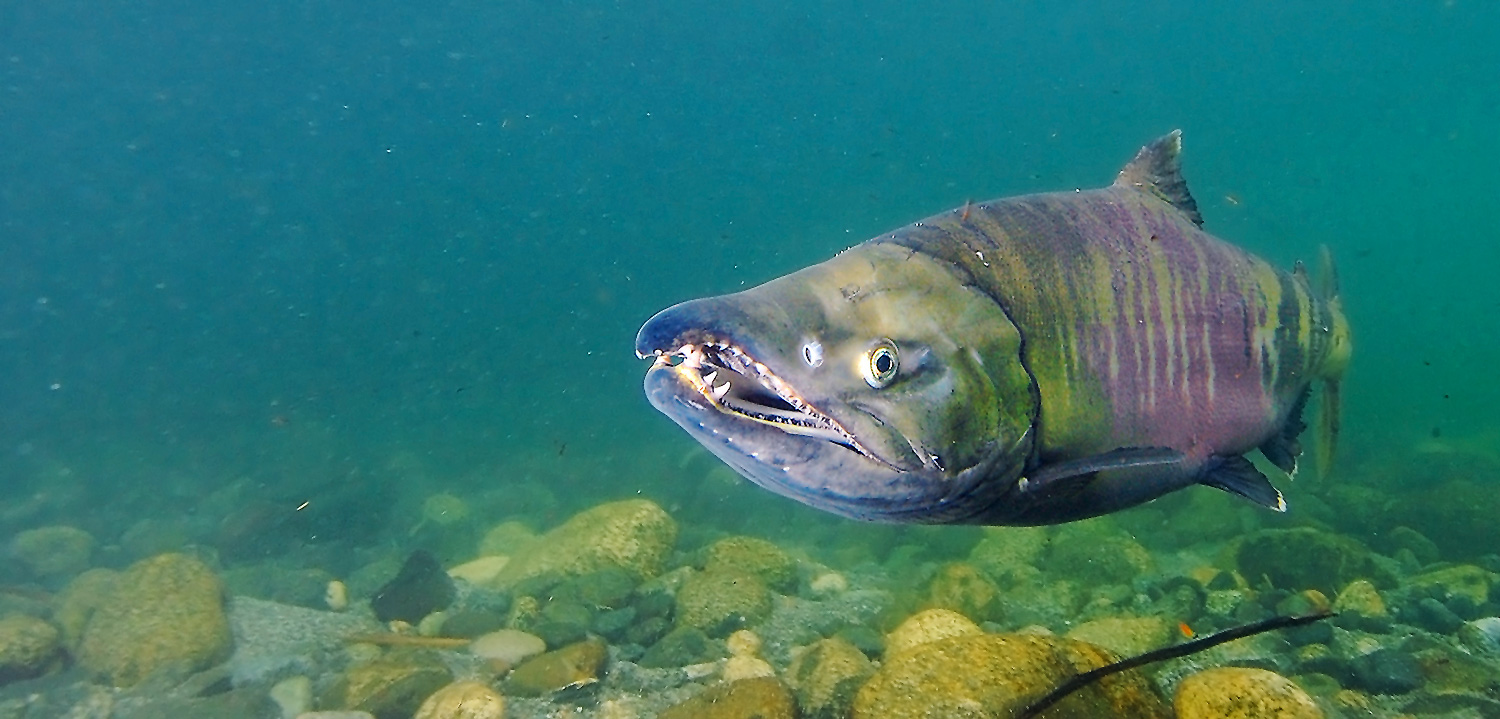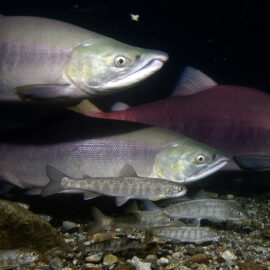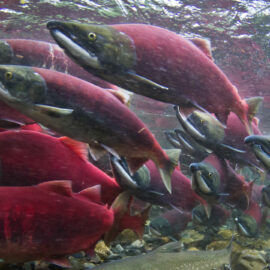Chum are the most widely distributed of Pacific salmon. Spawning in side channels of braided river reaches far upstream, they travel herculean distances—in Canada, as far as 7,700 miles (3,500 kilometers) up the Yukon River; in Russia, deep into the Amur River basin.
Chum are a major source of food in Japan and Russia—particularly their roe, which is highly prized. In North America, however, chum are among the least valued salmon. Chum are one of the most abundant salmon species, but local populations have been extripated in portions of their historic range.
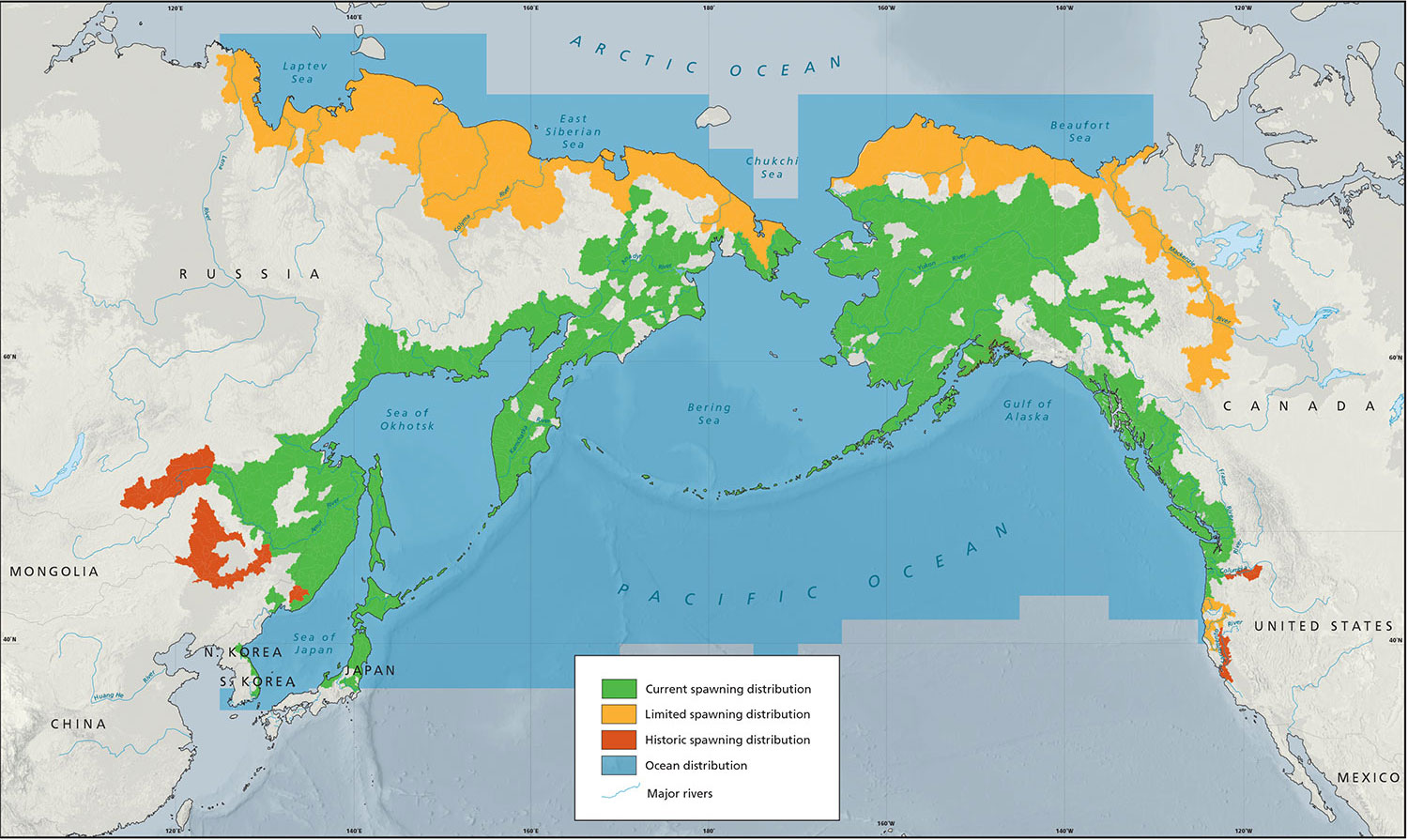
Chum and pink have the highest straying rates among Oncorhynchus—up to 10 percent. Chum are currently expanding into arctic areas and places that have never had Pacific salmon. Although widely distributed, chum populations are sparse at southern latitudes.
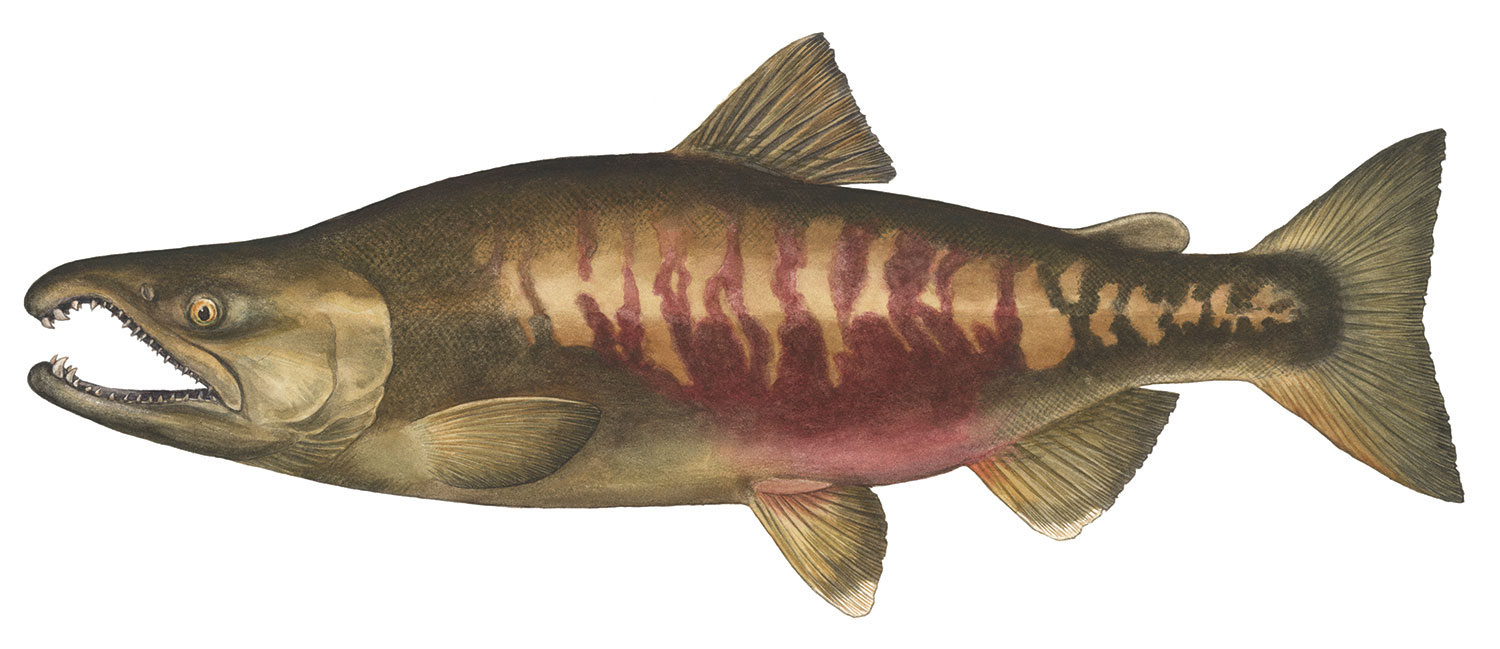
Scientific name
Oncorhynchus keta
Abundance
Chum is the most abundant species in Japan. Elsewhere in the Pacific, chum are second in abundance only to pink salmon, except in Oregon and California, where they are less numerous than steelhead, chinook, and coho.
Size
Next to Chinook, chum salmon are the largest of Pacific salmon, weighing 6.5 to 13 pounds (3 – 6 kg) and measuring up to 40 inches (100 cm) at maturity.
Life history
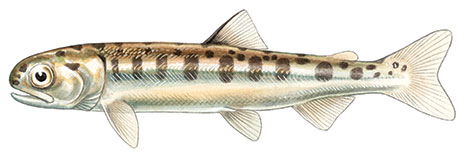
Chum live 3 – 5 years. They are most closely related to pink salmon and spawn in the lower reaches, side channels, and tributaries of gravel-bed rivers; unlike pink, however, chum can also be long-distance migrators. Most populations rely little on freshwater for development, beginning their ocean migration soon after emerging from the redd. Run timing varies; chum return to northern rivers from June to September and to more southerly rivers from August to November.
A few Japanese chum salmon runs return as late as early February. Chum maintain a diet of large, gelatinous zooplankton while in the ocean.
Cultural role
Chum are a staple for people in the western Pacific and for native peoples in Alaska and British Columbia. They are favored for drying by the indigenous Amur peoples because chum preserve better than the less oily pink salmon. In regions with abundant Chinook or sockeye, chum are dried for use as sled-dog food—a critical fuel in northern latitudes in preindustrial times.
